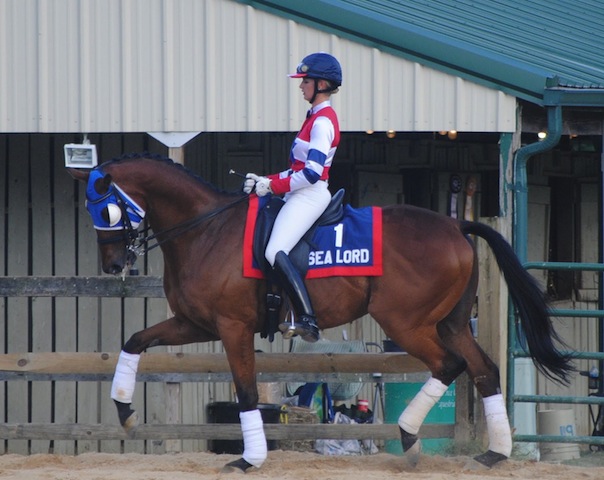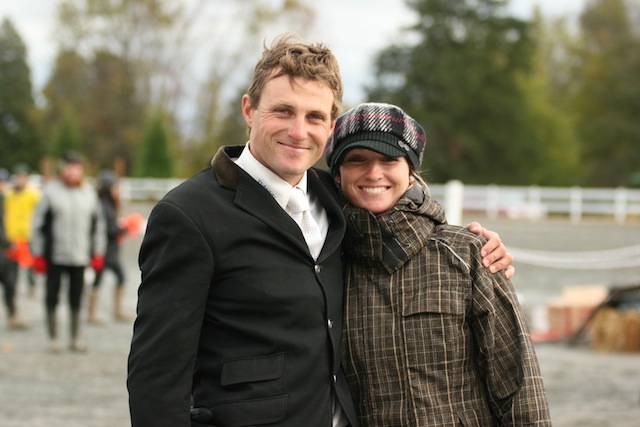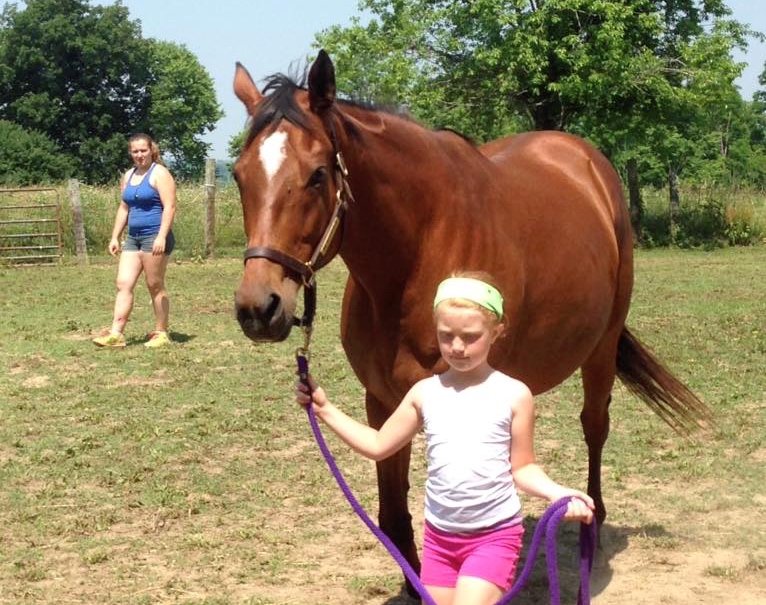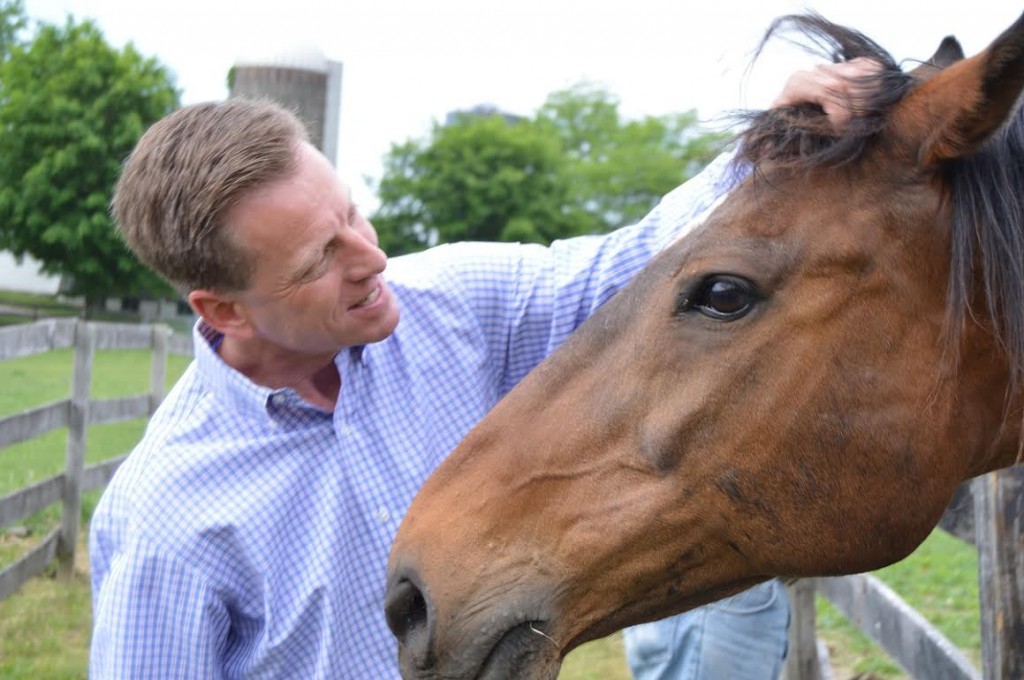
C.L. Rib communes with Hall of Fame jockey Richard Migliore of the Thoroughbred Retirement Foundation in late May.
“Don’t you worry,” the trainer said to the jockey. “He’s going to come from 35 lengths out of it, and he’ll be so far behind, but don’t give up.
“He’ll start running at the top of the stretch — and he’ll come flying.”
For nine years, stakes placed Ohio-bred C.L. Rib, or Ribby to his friends, put in performances on the track that brought fans to their feet and had announcers declaring, “Here comes C.L. Rib with a monster move!”
He was the type of racehorse you not only wouldn’t forget, but he is still very much the topic of conversation, nearly a decade later.
C.L. Rib
Sire: Alladin Rib
Dam: Majestic Savage
Foal date: April 23, 1997
Earnings: $329,633 in 94 startsLongtime fan Bob Coager, who introduced the big bay “character” of the backside to the delicacy of the jelly doughnut, and his one-time trainer Kenneth Streicher spoke with Off Track Thoroughbreds this week the special OTTB who is now retired at the Thoroughbred Retirement Foundation.
In an occasional feature spotlighting the retired racehorse Thoroughbreds who make up the 900+ herd at the oldest and largest national Thoroughbred charity, the men swapped stories and recollections of the days C.L. Rib was a “character” on the track, years before he took up residence at the TRF’s facility at the Wallkill Correctional Facility in New York.
While watering their horses at the Saratoga racetrack this week, the men were still shaking their heads as they recalled a run by Ribby on that very track years before.
It was Aug. 31, 2003 when C.L. Rib was putting in one of his most memorable performances.
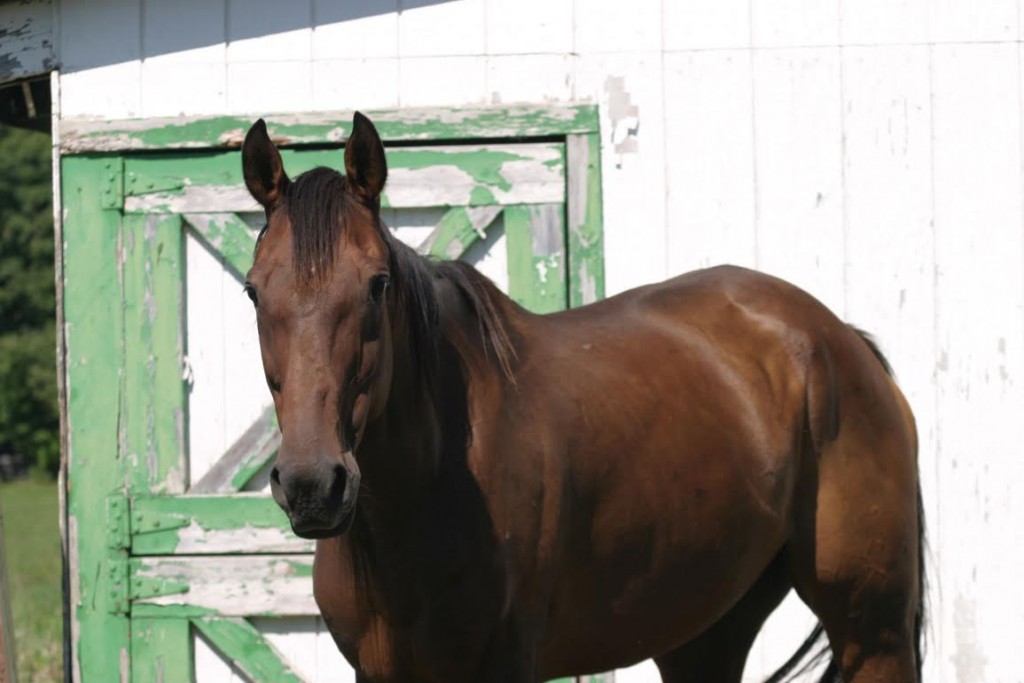
C.L. Rib enjoys life in the slow lane at the TRF’s Wallkill, N.Y. facility.
He was outrun early, but as was typical of his style, he swung wide and stormed down the center of the track to win it; or so thought the fans.
“Everyone in the crowd said he’d won it. The other trainer thought he’d won it. And the jockey, Javier Castellano was so mad afterword because he thought they’d won it,” recalls former trainer Kenneth Streicher. “But he was beaten by what they call a ‘dirty nose’ at the wire by Sovereign Sweep.”
Perhaps even C.L. Rib was a little mad that day, as his shenanigans after the race might attest.
While Streicher walked him back to the shedrow, the big-bodied Thoroughbred broke away and ran off. “I remember I yelled, ‘Close the gate!’ and Ribby ran up to the gait, turned around and … jumped over the hood of a truck.”
But after he was caught and settled down, the exuberant bay gave his all for Streicher until he was eventually claimed away for $75,000.

Jim Tremper, far left, with Richard Migliore and the racehorse who used to start running at the top of the stretch.
On a late October day in 2003 that Ribby was led away, Coager watched the animal exchange a lingering glance with another racehorse who’d become his buddy. And he never forgot the moment or the horse.
“I’m not ashamed to say I cried like a baby when I saw that,” he says.
Coager kept tabs on him, watching and worrying as the racehorse sunk lower in the claimers.
By the time C.L. Rib was running at Suffolk Downs in 2006, the older gentleman couldn’t hit the board in a $4,000 race, he says.
“I just kept watching and watching and watching,” he says. “I was going to try to claim him, but he got scratched, so I picked up the phone and called his owner at the time, Peter McGillivray and I said, ‘Listen, I’ve known C.L. Rib for the last three years and all I want to do is bring him home.”
And shortly thereafter, Coager worked out a deal. He paid $4,000 for the Thoroughbred he once fed jelly doughnuts, and negotiated a deal to get him retired to the Thoroughbred Retirement Foundation.
“I promised him that nobody was ever going to get on his back again,” Coager says. “He was a tired old warhorse, and he deserved a rest. When I retired him, I asked that they put him somewhere so I could always know where he was. This horse was something of a legend in Ohio and I didn’t want him to wind up somewhere where I could never find him.”

